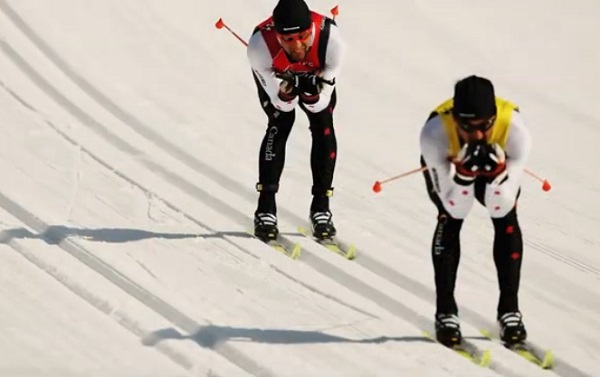Sports
Parker Thompson wins 2019 GT Sport Class Canadian Touring Car Championship

In an action packed race weekend at Circuit Trois-Rivières, Parker Thompson clinched the 2019 Canadian Touring Car Championship title for the GT Sport class. With two races remaining in the 10 race schedule, Thompson has mathematically secured his first sports car title, piloting the #1 New Road Automotive Group / Speedstar Motorsport Audi R8 LMS GT4 to dominant victories in seven of eight championship races.
Participating in two CTCC races as part of the annual GP3R Nascar weekend, the twenty-one-year-old Alberta native saw his perfect season to this point, come to an end in Race 1 on Friday night. After leading the opening 10 laps of the race, Thompson was forced to retire after receiving contact from the #27 GT Cup while the pair navigated lapped traffic.
For Race 2 on Saturday, Thompson started from pole-position and held top spot among GT Sport competitors for the duration of the 40-minute race. The win gave Thompson 946 points in the 2019 CTCC series, nearly double the total of his nearest competitor. He is set to win the championship in only his first season driving sports cars, and helps New Roads Automotive Group and Speedstar Motorsport extend their list of achievements in racing.
Parker Thompson
“Trois-Rivières has become one of my favourite places to go racing. The venue has an incredible atmosphere that always leads to a great event. Between great race action, and fun laps in some great Audi sports cars for a few special members of the crowd, we put on a great show. Throughout the weekend, the New Roads Automotive Group and Speedstar Motorsport team really demonstrated to everyone what they are all about. I’m so fortunate to get my introduction to the CTCC with such a great team, and I’m proud to be able to reward all their hard work with a 2019 Championship.”


Results CTCC Rounds 7 & 8 – GP3R
Qualifying – (PDF)
Race 1 – (PDF)
Race 2 – (PDF)
Overall Standings (HTML)
Next Events
August 15 – 16 – IP2000 Series Test – Gateway Motorsport Park, IL
August 23 – 24 – CTCC Round 9 & 10 – CTMP, ON
August 30 – 31 – IP2000 Round 13 & 14 – Portland International Raceway, OR
About Parker Thompson
Red Deer, Alberta native Parker Thompson is regarded as one of Canada’s premiere racing drivers. He started racing karts at age 8 and his natural talent and competitive drive quickly elevated him to international level competitions. By age 13 he was ranked 3rd in the world in Rotax Max karts. Now 21 years old, Parker continues his successful career racing on the Road to Indy, and in multiple sports car series.
Alberta Sports Hall of Fame and Museum
Alberta Sports Hall of Fame 2025 Inductee Profiles – Para Nordic Skiing – Brian and Robin McKeever

Brian & Robin McKeever – Para Nordic Skiing
Canmore natives Brian and Robin McKeever are celebrated for their monumental contributions to Para Nordic skiing. Brian, Canada’s most decorated Winter Paralympian, secured 20 Paralympic medals (16 gold) from 2002 to 2022. Despite vision loss from Stargardt’s disease, he excelled remarkably. Robin, a 1998 Olympian, became Brian’s guide, and together they won 10 Paralympic medals.
Transitioning to coaching, Robin led Canada’s Para Nordic team to 41 Paralympic medals from 2010 to 2022, with Brian succeeding him as Head Coach in 2022. Their induction honors their athletic achievements and enduring impact on Canadian sports and the Paralympic movement.
Alberta Sports Hall of Fame and Museum
Alberta Sports Hall of Fame 2025 Inductee profiles – Alpine Skiing Athlete – Brady Leman

Brady Leman – Alpine Skiing Athlete
Calgary native Brady Leman, born October 16, 1986, is celebrated as one of Canada’s most successful ski cross athletes. Overcoming a broken leg at the 2010 Olympics and a near-podium finish in 2014, Brady achieved gold in men’s ski cross at the 2018 Winter Olympics in PyeongChang.
With 6 World Cup victories and 32 podiums, he retired in 2023 after winning his final race on Canadian soil.
Beyond his athletic achievements, Brady actively supports future athletes through fundraising and leadership roles, including serving on the Alberta Alpine Ski Association Board. His induction honors his remarkable career and contributions to Canadian skiing.
-

 Alberta2 days ago
Alberta2 days agoCOWBOY UP! Pierre Poilievre Promises to Fight for Oil and Gas, a Stronger Military and the Interests of Western Canada
-

 MAiD1 day ago
MAiD1 day agoCanada’s euthanasia regime is already killing the disabled. It’s about to get worse
-

 Fraser Institute1 day ago
Fraser Institute1 day agoBefore Trudeau average annual immigration was 617,800. Under Trudeau number skyrocketted to 1.4 million from 2016 to 2024
-

 Censorship Industrial Complex15 hours ago
Censorship Industrial Complex15 hours agoCanadian pro-freedom group sounds alarm over Liberal plans to revive internet censorship bill
-

 Daily Caller2 days ago
Daily Caller2 days ago‘I Know How These People Operate’: Fmr CIA Officer Calls BS On FBI’s New Epstein Intel
-

 International2 days ago
International2 days agoChicago suburb purchases childhood home of Pope Leo XIV
-

 Alberta4 hours ago
Alberta4 hours ago‘Far too serious for such uninformed, careless journalism’: Complaint filed against Globe and Mail article challenging Alberta’s gender surgery law
-

 Crime1 day ago
Crime1 day ago“This is a total fucking disaster”

